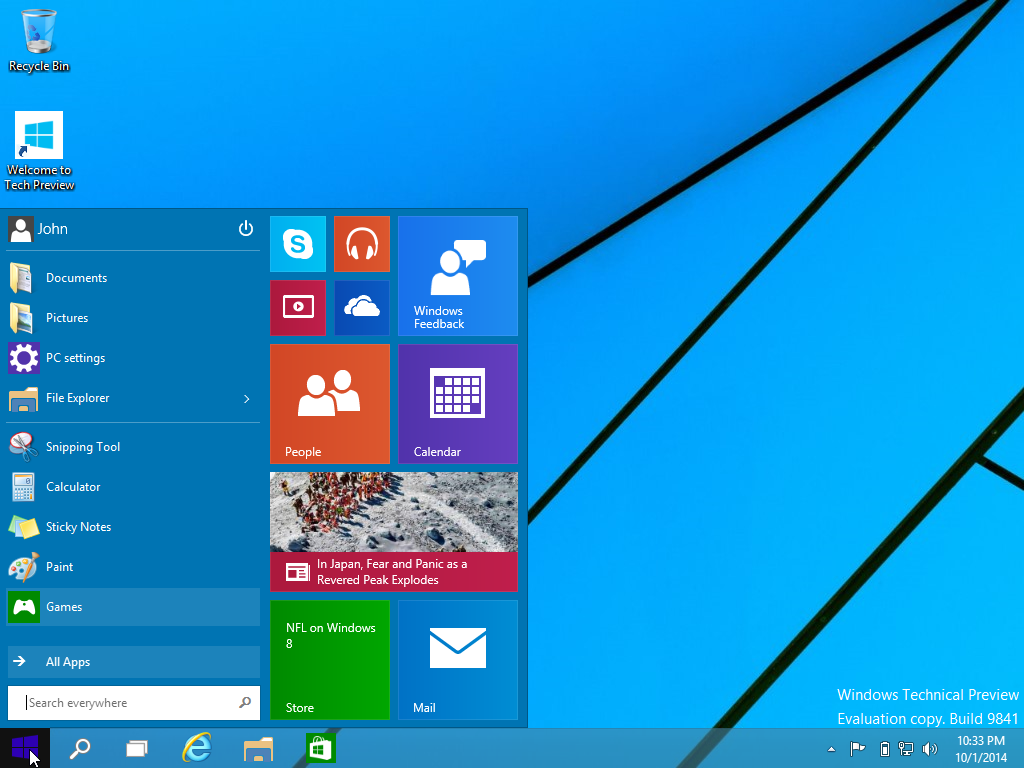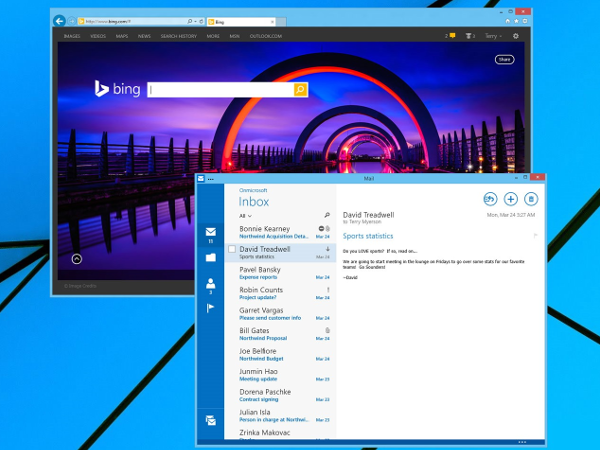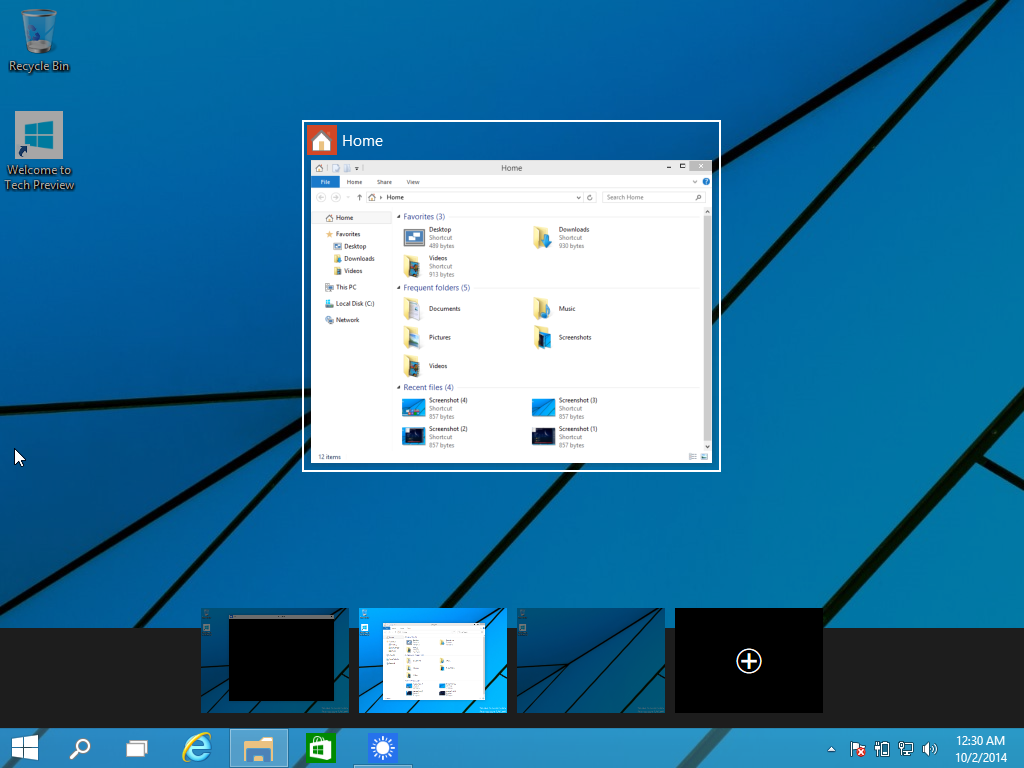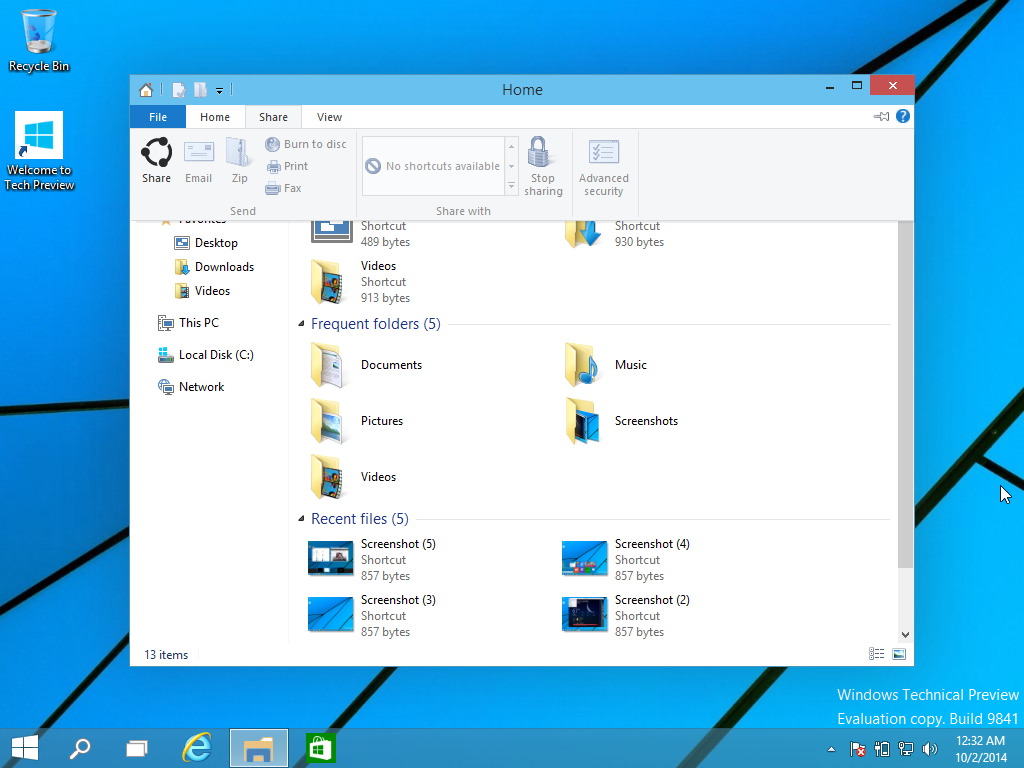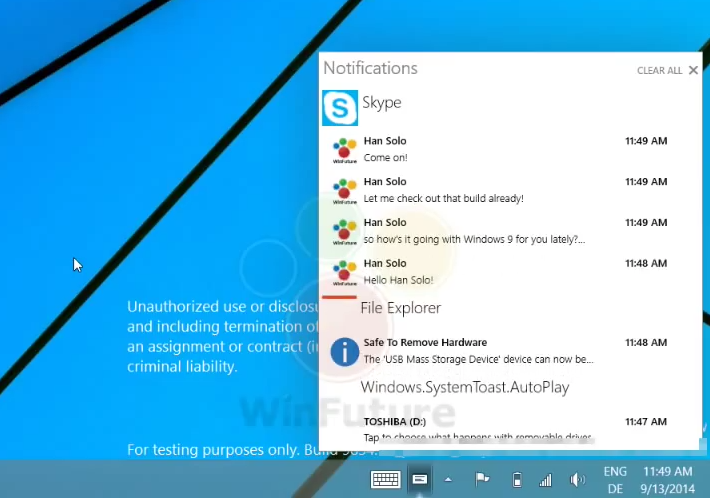Windows 10: The Major New Features, In Pictures
Approaching The Threshold
Two days ago Microsoft unveiled the first draft of the successor to Windows 8, once codenamed "Threshold", now officially dubbed "Windows 10". Yesterday, the company released the first draft of Windows 10 in the form of a Technical Preview for businesses and other partners. With this new version of Windows, Microsoft has two major objectives: correct the strategic mistakes of Windows 8, and migrate all current Windows users (be they on XP, Vista, 7 or 8/8.1) to Windows 10.
But Microsoft is also pursuing secondary goals, beginning with the unification of its underlying systems. Windows 10 will be on PCs, tablets, smartphones, the XBox One console and other connected devices — only the user interface will vary between platforms.
The Return Of The Start Menu
The Start menu is back, folks! This is perhaps the most iconic feature of Windows 10. It epitomizes how Microsoft is finally reacting to the opinions of the majority of its user base: that removing the Start menu was a mistake, and the idea that a single touch-based interface would be appropriate for the typical desktop or laptop was absurd.
Meanwhile, the company hasn't abandoned some of the few good ideas introduced by the Windows 8 Start screen, such as Live Tiles. Like the Taskbar of Windows 8, the color of the Start menu automatically adapts to the dominant color of the desktop wallpaper.
The newly revived Start menu retains the classic list of programs, but it can now be resized at will, and it incorporates the iconic Live Tiles of Windows 8. The tile still scroll through information without having expand the associated applications just like they did in the Start screen. However, you aren’t obligated to pin any Windows Store apps to the Start menu. If you don’t, they will appear in the master list of applications just like any other.
Windows Store Apps Run In A Window
In Windows 10, the desktop can rule once again! On a typical PC, the Desktop regains its role as the primary user interface. Windows 8 users who want to continue using the Start screen still can, but may find that it's been disabled by default. What's more, when Windows Store apps are launched from the Start menu, the Taskbar or the Desktop, they open as regular windowed Desktop apps by default. Windows Store apps will, however, be displayed in full screen view if launched from the Start screen.
The Charms Bar, Redesigned
In Windows 8 and 8.1, the Charms Bar had essentially no use on the desktop whatsoever. In Windows 10, it disappears completely in this environment and will now only be available on tablets and other touchscreen-enabled PCs. The features of the Charms Bar are now located inside a new menu that appears on the titlebar of Windows Store app windows.
Get Tom's Hardware's best news and in-depth reviews, straight to your inbox.
Virtual Desktops
Now that the desktop regains supremacy, Microsoft needed to add some serious innovations to its traditional user interface. Sometimes you can't have more than one monitor (like on a laptop), and some apps are simply better off maximized than they are snapped (such as Photoshop). Hence, the introduction of a longstanding feature of Linux and OS X: virtual desktops.
In this UI paradigm, the user has several desktops which they can organize as they see fit, and switch between them at will. With the Windows 10 virtual desktop system, it’s pretty easy to create desktops and close apps wherever they are via a redesigned Task Switcher (former Alt+Tab) which is now incorporated into the Desktop Switcher.
Unfortunately, moving apps between desktops is an unwieldy right-click affair, and repositioning desktops appears to be impossible in the Technical Preview. If OS X’s Mission Control, or even some of the Linux solutions are the benchmark, Microsoft still has a ways to go with its virtual desktop implementation.
The Desktop, Refined
The Desktop may be given a slight makeover, but this hasn't materialized too far in the Technical Preview. One change that is noticeable is the new File Explorer icon and the additional Share entry in the ribbon, which as its name implies, let's you more easily share files and folders with friends and colleagues.
To 4K And Beyond
Microsoft is also working towards better native management for high-density screens. True 4K UHD screens are starting to appear on the market, and some manufacturers are already working on 8K panels. Already improved under Windows 8.1, the dynamic management of font size by pixel density should be even easier and more natural in Windows 10.
Start Screen, Enhanced
Despite the return of the desktop and Start menu, the Start screen of Windows 8 does not entirely disappear. It will remain the primary user interface for tablets and smartphones. Microsoft also intends to further enrich the user interface formerly known as Metro by introducing even more interactivity to the Live Tiles in the form of action buttons.
Notification Center
Born in version 8.1 of Windows Phone, the centralized Notifications Center will also appear in Windows 10. It will house all alerts, reminders and notifications issued by the system and by applications. Operation will be very similar to Windows Phone 8.1, with notifications grouped by app.
Storage Sense
Budget Windows tablets generally come equipped with the bare minimum amount of flash storage (16GB or even 8GB). Therefore, it should be possible to install the Windows Store apps on external media such as microSD cards (as is the case with Windows Phone 8.1). The upcoming "Storage Sense" function is designed to help you better understand your disk usage, and if desired, move items to and from external storage.
Wi-Fi Sense
Windows 10 will also inherit the "Wi-Fi Sense" feature of Windows Phone. It allows you to connect automatically whenever a Wi-Fi hotspot is detected, and to authenticate and accept any required terms of use. The feature also allows you to share Wi-Fi access with your friends without having to actually disclose the password to your home network.
-
ZeusGamer Are they skipping Windows 9 because Nvidia skipped the 8 series?Reply
it looks really good though. I've always liked how Windows 8 has more sharped edges rather than round. But that's just me.
Can't wait for the final release of this product though. -
csbeer I'd drop down a grand in a heartbeat for a Win10 (x86, not some ARM version) smartphone/phablet with usb 3.1 and HDMI. I don't care if it's huge, i'll just carry around a European satchel :PReply -
csbeer Well maybe not a grand, kind of got carried away there. But if it can replace my existing smartphone, tablet, and ultrabook then we're talking serious value there. Dang it Tom's when are you going to let us edit our comments...Reply -
Creme I think they're calling it Windows 10 so Windows 7 users feel way behind the times and upgrade.Reply
I'm half serious. -
tridon Will this mean i don't have to Alt+F4 to close a program? EPIC!Reply
(Yes, I'm exaggerating, but before I had installed all my usual programs, there were some of them needing to be closed with Alt+F4. Felt like I was thrown back to the 90s.) -
kamhagh desktop swticher, finally, awesome ! anyway i only use windows for games and keil uvision !Reply -
GPUPacman ReplyAre they skipping Windows 9 because Nvidia skipped the 8 series?
it looks really good though. I've always liked how Windows 8 has more sharped edges rather than round. But that's just me.
Well, they did name their third Xbox that everybody that was going to be called the 720 the Xbox One.
Can't wait for the final release of this product though.

